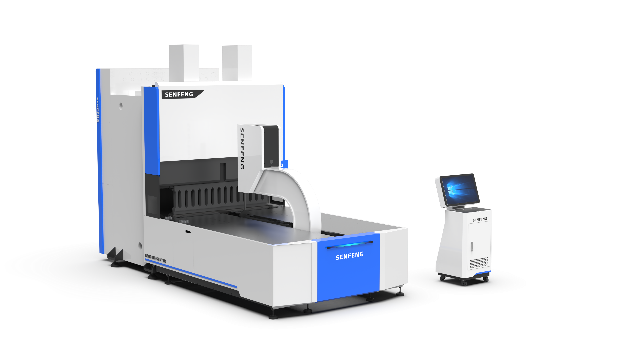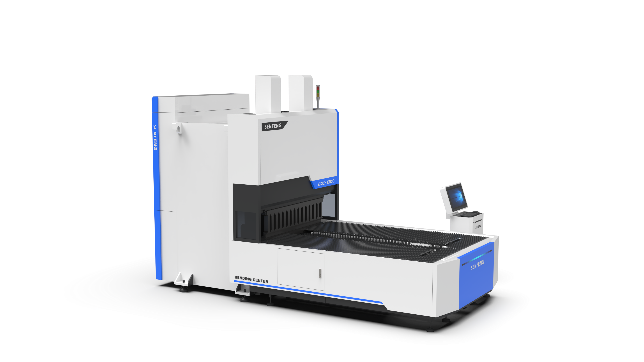Differences Between Push-Down and Suction-Cup Panel Benders
In the realm of metal fabrication, selecting the right bending technology is crucial for efficiency, precision, and cost-effectiveness. Two prominent types of automatic panel benders are push-down model and the suction-cup model. Each has its own advantages and ideal applications. This article will compare their principles, performance, work efficiency, stability and applications.
1 Working Principles
The images below show the appearance of push-down and suction-cup panel benders.


Figure 1: Push-down panel bender Figure 2: Suction-cup panel bender
Push-Down Type
It utilizes an adjustable arm mechanism to secure sheet metal in place during the bending process. By raising and lowering the arm, operators can easily accommodate different sizes of materials. Once the sheet is placed on the bending machine, the arm holds it firmly and feeds it to the bending position, ensuring precise shaping. This design enhances stability and accuracy, making it an ideal choice for various metalworking applications where flexibility and adaptability are essential.
Suction-Cup Type
This type of machine utilizes suction cups to securely hold the sheet metal on the work table, preventing any movement during the bending process. The sheet is placed on the table, where the suction cups then maneuver it into the correct bending position. Once aligned, the operator activates the bending machine to shape the material into the desired configuration. This design is simple to operate and offers high precision, making it more suitable for batch bending of sheet metal.
2 Bending Performance: Thickness, Height
The push-down panel bender, with its unique design features such as the arm feeding system, clamping jaws, and 13-axis linkage, enables it to process thicker workpieces and achieve greater bending heights. For example, in the same model BDC1500, the push-down type can handle 1.5 mm thick 304 stainless steel, 2.0 mm cold plate, and 2.5 mm aluminum, with optional bending heights of 200 or 300 mm. In contrast, the suction-cup type can process 0.8 mm thick 201 stainless steel, 1.0 mm cold plate, and 1.3 mm aluminum, with a bending height of 170 mm. These differences highlight the advantages of the push-down bending machine when handling complex and high-demand projects, particularly in applications requiring greater thickness and height.
3 Workpiece Requirements
Push-Down Type
This model features a push-down feeding system that clamps the workpiece using two upper and lower jaws. This approach reduces the requirements for the surface smoothness and flatness of the processed sheet metal, allowing it to handle materials with imperfections, surface dents, or more complex geometries. Furthermore, the 13-axis concurrent linkage system makes it well-suited for more intricate bending tasks, such as when dealing with longer sheets that require multiple bends.
Suction-Cup Type
This model employs a suction feeding system that uses a vacuum pump to create negative pressure for adhering the sheet metal. This requires the surface of the material to be smooth and flat to ensure the workpiece remains properly aligned during feeding and rotation. With its 10-axis concurrent linkage system, this design is particularly suited for simpler bending processes and high-volume production tasks, allowing for efficient and consistent results.
4 Work Efficiency
Push-Down Type
The push-down panel bending machine requires the sheet metal to be placed on the bending machine and then secured at the bending center before the bending process begins. This method can be quite cumbersome and involves a longer operational time due to multiple steps.
Suction-Cup Type
In contrast, the suction-cup type simplifies the process by allowing the operator to place the sheet on the worktable and secure it using suction cups. This streamlined approach significantly reduces operational time, making it more efficient for high-volume production tasks.
5 Stability
Push-Down Type
The stability of the push-down panel bender is notably higher because it firmly secures the sheet metal at the bending center, preventing any movement during the bending process. This ensures greater precision and consistency in the final product.
Suction-Cup Type
On the other hand, the suction-cup panel bender has lower stability since the sheet is only held in place by suction. If the suction is not strong enough, the material may shift, adversely affecting bending accuracy. Therefore, while this system is efficient, it requires careful monitoring to ensure reliable results.
6 Applications
Push-Down Type
The push-down panel bending center is particularly well-suited for processing workpieces with a wide thickness range and complex shapes, such as large metal frames, brackets, and housings. Plus, it can efficiently handle tasks requiring multiple bends. Its superior stability and flexibility make it widely applicable in the production of machinery, equipment, and tools, including the fabrication of vehicle chassis and components.
Suction-Cup Type
The suction-cup panel bender offers a higher cost-performance ratio and is ideal for processing thinner workpieces that can be effectively secured by the suction cups. It is well-suited for simple-shaped parts, including flat surfaces, gentle curves, or minimal bends, facilitating high-efficiency production. However, this equipment requires a greater level of smoothness and flatness for the workpieces. It is widely used in industries such as home appliance manufacturing, advertising, and furniture production.
Conclusion
Choosing between push-down panel benders and suction-cup panel benders is like picking a side in a friendly rivalry—each has its own unique flair and strengths! Suction-cup models shine with their cost-effectiveness and ease of use, making them perfect for simpler tasks and quick jobs. Meanwhile, push-down systems bring advanced technology and precision to the table, ideal for tackling complex projects and high-volume production with finesse. By evaluating your specific needs, you can discover which bending technology will become your ultimate ally in the world of metal fabrication!

